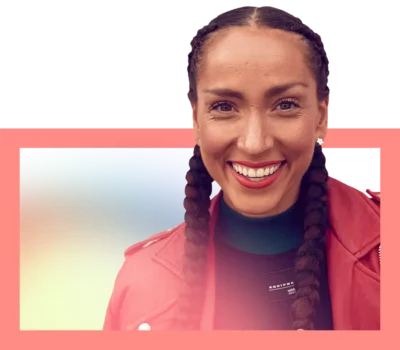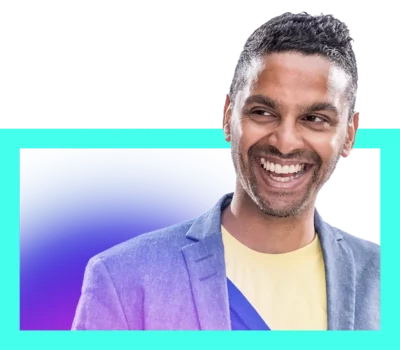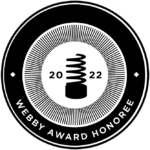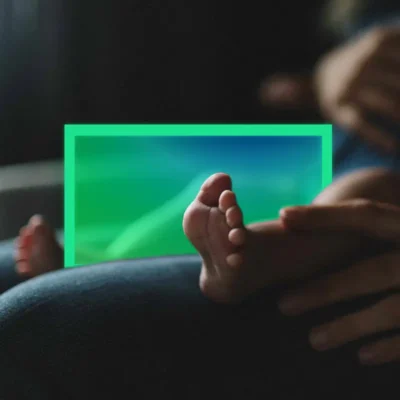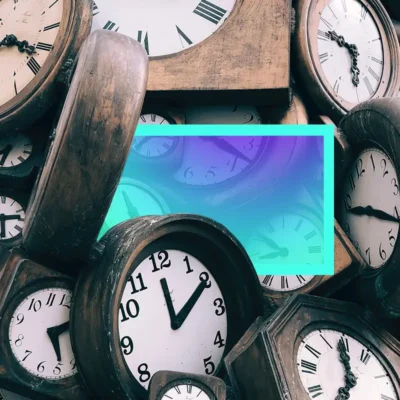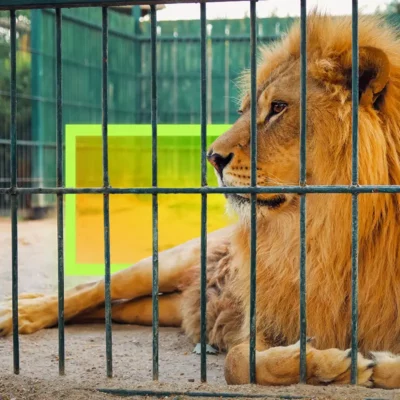Do big things one step at a time
Robin Arzón is a star fitness coach at Peloton, beloved for her high-energy coaching with more than a dash of tough love. In this story, join Robin on the longest run of her life: the Florida Keys 100 Ultramarathon. As difficult as it is to run 100 sweaty miles in the South Florida heat, far more challenging is the mental fortitude to keep doubt at bay.
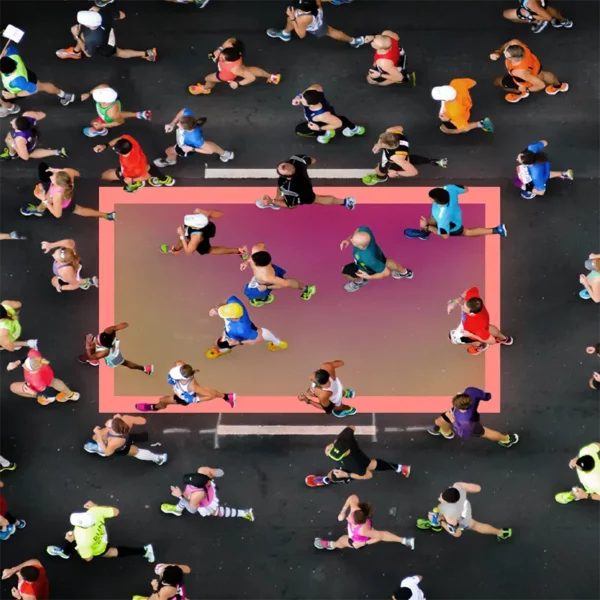
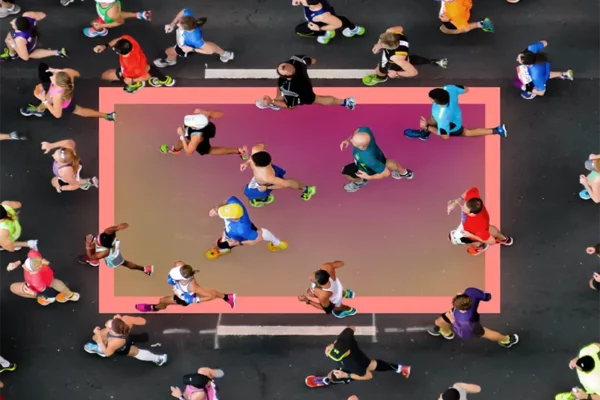
Table of Contents:
Transcript:
Do big things one step at a time
ROBIN ARZÓN: The first 50 miles are uneventful, which is good. If you’re having trouble in the first half, it’s going to be that much harder to keep moving. The sky slowly darkens without much color. It must be sunset. I’ve been running the whole day. The air rushing in and out of my lungs feels cooler. The sweat moves through my pores on my forehead.
I tune into my body for a quick scan: my legs don’t hurt. My feet feel swollen but not too bad. Keep drinking, I think. I need more salt, I want those pickles. Mostly I am focused on my next goal: just get to the bridge, just get to the bridge. It becomes a mantra, matching my pounding footsteps.
I have to get to the Seven Mile Bridge around mile 70 before a certain time. And the bridge will be hard, because it will be dark again and no support vehicles are allowed to stop. Around mile 60, I can feel hot spots starting to burn on my feet, the beginning of blisters. Usually changing shoes and socks are enough to prevent this. But this is the furthest I’ve ever run at one time.
ROHAN GUNATILLAKE: Robin Arzón believes “sweat transforms lives.” If you’re a Peloton fanatic, you certainly know Robin. If you’re not a Pelotoner yet, she’s a star fitness coach and loved for her high-energy, inspirational, coaching style with more than a dash of tough love. I think the title of her New York Times Bestselling book is exactly what you need to know about her. It’s called Shut Up and Run, which as an occasional runner myself makes me smile just saying it.
In this episode of Meditative Story, Robin takes us along for the longest run of her life, the Florida Keys 100 Ultramarathon. That’s 100 miles in one of the hottest parts of the United States. As difficult as the physical toll is, far more challenging is the mental fortitude to keep doubt at bay. Tie your shoes. Here we go.
In this series, we combine immersive first-person stories, breathtaking music and mindfulness prompts, so that we may see our lives reflected back to us in other people’s stories. And that can lead to improvements in our own inner lives. From WaitWhat, this is Meditative Story. I’m Rohan, and I’ll be your guide.
The body relaxed, the body breathing, your senses open, your mind open, meeting the world.
ARZÓN: It’s eerily quiet when my mother and I leave the condo at 4 a.m. to get to the starting line. I’m wearing a multicolored top that says ROBIN in big letters, turquoise shorts, and bright pink compression socks. Hey, I believe in looking good for victory and calling it in. Every race is like a runway for me, and this one is no different, although I’ve never tried running 100 miles before. Soon I’m standing among the other runners in the dark, getting ready to turn our headlamps on. My father and sister and uncle and cousin will meet me in a couple of hours to cheer me on and deliver my favorite snacks.
The clock starts, and off we go with our beams of light snaking through the flat streets of Key Largo. The air smells like seawater, and I can hear the first morning calls of gulls. I concentrate on the cadence of my own footsteps hitting the pavement. It’s already 86 degrees.
I’m starting this race with one question for myself: Can I turn “I can’t” into “I can?” I have to get to the finish line in Key West in 30 hours or less, or I’ll be disqualified. I’m running just for me. No sponsorships, no commitments to anyone other than myself. I’m going to give this race everything that I have. Ten years ago, I’d never even laced up a pair of running shoes, and I would never have called myself an athlete. Now, even though I’m strong and fit and just wrote a book called Shut Up and Run, I still sometimes feel like an imposter. How can I possibly think I’m someone who can run 100 miles?
But here I am, ready to find out.
The dawn light slowly turns into the glare of morning. I see my family waving at the first aid station, and I burst out laughing. They are all wearing straw cowboy hats with a picture of me glued to the brim. And my father! He is wearing jeans, suspenders, no shirt! I literally cannot believe that’s what he is wearing right now. They hand me water and my favorite race snacks: pickles and potato chips. I feel the salt and the crunch in my mouth, and I’m so grateful for the care and good cheer. Then they pass me clean socks, bandaids and my phone so I can update social media. It’s like a NASCAR pit stop – less than 5 minutes, and I keep moving.
For days we’ve been hanging out at the rented condo, sitting by the pool, resting up for the big race. My uncle cracks us up by watching a lot of Say Yes to the Dress. He has more opinions on wedding dresses than I do. I’m filled with nervous energy mixed with excitement, mixed with a little bit of fear. I’m not used to the inactivity. I feel like a caged tiger.
The days leading up to something that you know is going to become a big part of your story, no matter how it goes, have this special quality to them. Moments like this are rare in everyday life. They’re an opportunity to step into the unknown, to spend time in transitional, liminal space. And you know you will come out the other side changed.
GUNATILLAKE: Some days which change our lives are known, like Robin’s race. Others catch us by surprise. Given that, what would it be like to always be ready to step into the unknown? What kind of attention would we need to have? Have that attention now, able to step into an unknown space where you can grow.
ARZÓN: A lot of ultramarathoners have stories that begin in trauma. We run because we want a different ending. As a junior in college, I’m at a wine bar in New York’s East Village when a gunman staggers in. We become his hostages. It’s a horrific ordeal, and thankfully the police are able to capture him. But it changes me. For a couple of years, I feel almost immobile. But one day I pull some old sneakers out of my closet. They’re not even running sneakers, but they carry me a few blocks. Another day I jog a few more. I keep at it. Running, I start to see, can take me to a different place inside my head. A place where I’m the writer of my own story.
Years later, here I am in Key Largo with this strong body I’ve built. The world narrows to just a few meaningful details, like the peanut butter sandwich waiting for me at the next stop. I’m still chuckling about my dad. He and my mom are divorced, but they are here together to support my run. This run is my own journey, but it’s also a family affair. I’m also on a high from meeting a man last week at a party who I’m sure will become my husband. He feels the same way, because after three days he proposes. I’m running in a very long straight line, but I feel like I’m being held in a circle of love. I grab the peanut butter sandwich from my cousin and pour water on my head. I have 26 hours to go.
Many miles in, the spectators have thinned, and the runners are no longer close together. I jog straight, flat stretches seeing only South Florida as usual: wide asphalt roadways, pastel condos, strip malls selling sunscreen and flip flops. My family has our routine down. They leapfrog me, and we repeat the same drill. I feel solid in my body. I’m trying not to go too fast or too slow, but just forward, step after step. By early afternoon, it is face-meltingly hot. I’ve been training in New York all winter and spring, where it was 20 degrees cooler. At mile 40 my uncle says, “You still have a long way left!” And we all stare daggers at him. He learns.
The first 50 miles are uneventful, which is good. If you’re having trouble in the first half, it’s going to be that much harder to keep moving. The sky slowly darkens without much color. It must be sunset. I’ve been running the whole day. The air rushing in and out of my lungs feels cooler. The sweat moves through my pores on my forehead. I tune into my body for a quick scan: my legs don’t hurt. My feet feel swollen but not too bad. Keep drinking, I think. I need more salt, I want those pickles. Mostly I am focused on my next goal: just get to the bridge, just get to the bridge. It becomes a mantra, matching my pounding footsteps. I have to get to the Seven Mile Bridge around mile 70 before a certain time. And the bridge will be hard, because it will be dark again, and no support vehicles are allowed to stop.
Around mile 60, I can feel hot spots starting to burn on my feet, the beginning of blisters. Usually changing shoes and socks are enough to prevent this. But this is the furthest I’ve ever run at one time. At the aid station, my mother, a doctor, ministers to me, applying powders and oils and patting my leg as I leave her for the next stretch. As always, she knows just what I need without a lot of words being spoken. All her gestures convey one message: You can do this. Now go do it.
GUNATILLAKE: Let’s echo Robin in this moment. Your energy and attention too may have drifted away from the aliveness of the story, it’s OK. It’s been a long day already. Like Robin, let’s bring the energy back, no judgment. And place yourself in this scene, imagining being there with her and her mother.
ARZÓN: I make it to the start of the bridge in time. I see my family’s van and slump into a folding chair for a few minutes. Someone hands me a banana. I’m spent. My cousin pulls out my phone to take a video, and I give him the finger. I jiggle my arms and legs to rouse up some energy, and head out into the night. The land slopes away beneath me, and I’m running on the long bridge that connects Marathon, the last of the Upper Keys, to the Lower Keys. I know there’s open water on both sides, but all I can see is the circle of asphalt illuminated by my headlamp. I might as well be running through outer space. Beyond me is expansive nothingness.
I don’t know if the other runners are ahead of me or dropped out, but I’m all alone. It’s just my painful feet, my breath, my headlamp, my mind. It’s moments like this that you have to go completely internal. It’s where the story you tell yourself of who you are becomes the thing that keeps you moving.
Still, doubt swirls inside me like the currents under the bridge. The pain I expect. It’s my mind that’s the problem. What if I don’t make it in time? Who do I think I am to be running an ultramarathon? Am I permanently damaging my feet? I tell myself not to listen. Instead I build glorious castles in my mind. “I am a queen!” I say out loud. I bang on my chest with my fists. “I’m the baddest bitch around.”
In the moments of our greatest struggles, we have the opportunity to either dismantle or rebuild ourselves, and I choose to rebuild. It doesn’t matter if what you rebuild is entirely fantastical. Sometimes fantastical gets you to the finish line.
In the glow of my headlamp I catch a small white construction marker painted on the road that looks like a heart. I’ve seen them throughout the course, and I tell myself they are a message for me, sent by my ancestors. My grandmother fled Castro’s Cuba, and my mother put herself through medical school. These women are the reasons I have the words “resilient stock” tattooed on my ribcage. Now I see that gleaming heart, and I know they are feeding me their strength.
I’m nearly off the bridge. It could have taken six hours, it could have taken 10 minutes. All I know is it’s the middle of the night, and I can no longer feel my feet. I walk some, I jog some. I count my steps, one to five, and then repeat. Finally, in the light beams, I see my mother waiting for me – her red hair, her bright colored glasses. She looks 10 feet tall even though she is tiny. She lives her life like she’s an exclamation point. But we’re quiet with each other now as she unlaces my shoes and applies ointments. My feet are unrecognizable: puffy and bloody and patched with shreds of tape. She says not to worry, they will be fine when this is all over.
When I run again, my feet are completely numb. The pain receptors have turned off. And now, finally, there is Beyonce! I’ve waited to reward myself with music until the last 26 miles, the length of one marathon. Yes! “I’m a diva” I sing along with her. I am a diva! The music is rocket fuel to push me south.
“Nobody on this planet can stop me,” I whisper to myself. The wind whips my face, the salty ocean air fills my lungs. I should save my breath, but I call to the night sky, “Let’s go!”
Sunrise, again. Another spray-painted heart.
The miles ahead start shrinking, till there are 15 left, then 10, then only 5. It dawns on me, I’m really going to make it. The heat sets back in, but I barely feel it. I’m flying on adrenaline now, a third or fourth or fifth wind. The course winds its way toward the beach, ever closer to the finish line. I get a little surge but I’m moving slowly. My family is running with me. “Where is the finish line??” I ask. “It’s right there, it’s right there,” they say several times. I can’t see it. My vision is so blurred from sweat, and salt, and tears. And then finally I see the banner saying Florida Keys 100, and the blue square marquee, and all the people, and I hear the music. This is it. A wave of chills pulses through my body, pure emotion. I laugh with my parents. I do a little shimmy victory dance. I can’t believe it.
In the months after the race, I feel stunned that I finished, because I’d had so much doubt. But I also notice something else. The race somehow makes doubt less scary, more … tolerable. I realize that doubt can exist in me without thwarting me.
I think about this race all the time. Four years later, I have a baby bump so big I need special maternity biking shorts. In preparation for giving birth – yes, that man becomes my husband – I think about this race. I think about why we ritualize discomfort. And now I know the answer: We catalyze pain into power. I look at motherhood the same way. When I have moments where I have no idea what I’m doing, I remember that I have built the capacity to trust myself.
I hold our baby, and I look deep into her eyes, which are my husband’s eyes, and I remember that I am the physical manifestation of my ancestors’ most wonderful, complicated, varied dreams and utterances. And I think maybe they were whispers, and I can now become the roar. I am the manifestation of my abuela’s greatest dreams, and now our baby has become that manifestation too. There isn’t a day where I don’t think about that.
I will give my daughter the tools to navigate her own fear and doubt. Already I give her the mantras that I tell myself on those long, hard runs. I tell her you are safe, you are loved, you are strong.
I believe our challenges are our teachers, whether it’s a race or trauma or something else. We need to think big, and we need to think small. I focus on the big superhero that is me, but also on the minutiae of my footsteps, just taking the next small, tiny step. There’s always that inner voice, worrying that the small step is not enough. I choose to listen to that other voice I’ve nurtured in my head, the one that says to take that step anyway.
Eventually, I out-distance doubt.
Rohan’s closing meditation
GUNATILLAKE: Don’t worry, we’re not going to do the meditation equivalent of an ultramarathon. I did think about it, but then if you’re able to do that, then maybe you should be hosting this show rather than me!
Robin’s story was chock full of mindfulness or mindfulness-adjacent ideas and practices, and so for our short closing time together, let’s do them ourselves.
Early on, Robin speaks of tuning into her body and doing a quick scan, and we can do the same. Through our intention, we can place our awareness where we want, so let’s start by bringing it to the face. Noticing the temperature of the face, letting a little smile bring more relaxation to the jaw and to the wider body, a trick many runners know. Good, now let the attention flow down into the chest and belly, again relaxing any tension you find here. Now your hands, letting the hands be soft. Flowing your awareness through your body, noticing any tension, and inviting it to relax. And finally to the legs and feet, doing the same.
Robin talks about her cadence, the rhythm by which her feet touch the ground as she runs. Many long distance runners talk about how it can be a meditative thing, and that’s often due to the cadence. Touching the earth so many times a minute, each contact a contact of presence – awareness, body, and ground connected. The most common cadence in meditation is the breath, so let’s use that instead now. For Robin it was awareness, body, earth united. For us it is awareness, body, air. Our awareness now refined from the quick scan, let’s drop into the rhythm of breathing. Just enjoying the cadence.
And if you like, doing what Robin does. Counting breaths though rather than steps up to five. One on the in breath, one on the out breath. 2/2, 3/3, 4/4, 5/5. Let’s give it a go for a mile or two.
Ok. The big one. Robin’s reflections on doubt and how she works with it are really lovely. And the mind doesn’t need to be doing something extraordinary like the Keys 100 for self-doubt to arise, not sure if you’ve noticed.
In her story she talks about how doubt can exist in her without thwarting her. This is one of the big wins that can be possible through mindfulness, changing our relationship to thoughts so that we can live with them but not be trapped by them. A mindfulness shorthand for this is that thoughts are not facts. The more we see that, and the more we understand that, the freer we will be from all our difficult emotions.
So let’s try that out. Whatever is here in the mind, know it. And name it. And whatever thoughts are here, state to yourself how they are not facts, however they might seem to be. If we train like this on the light stuff, when things get really tough, then we’ll have built the endurance to coast on through.
Thanks Robin, and thank you.
